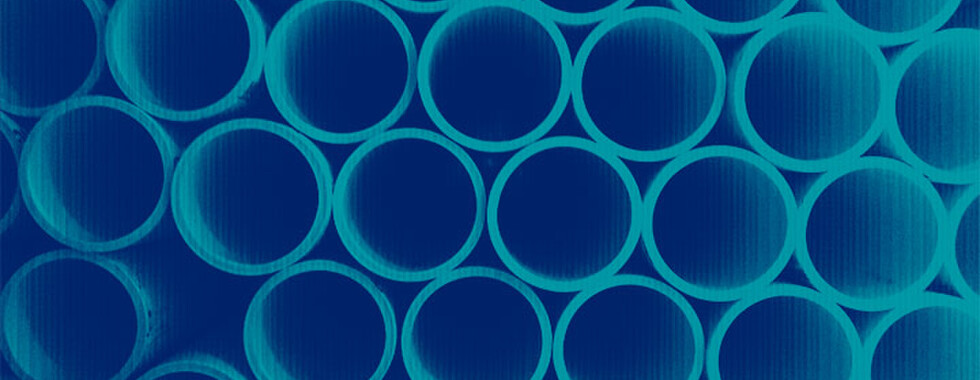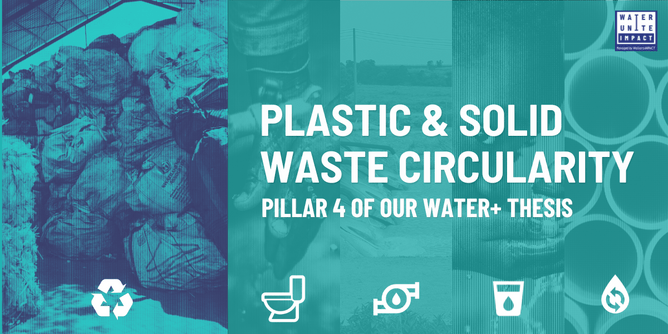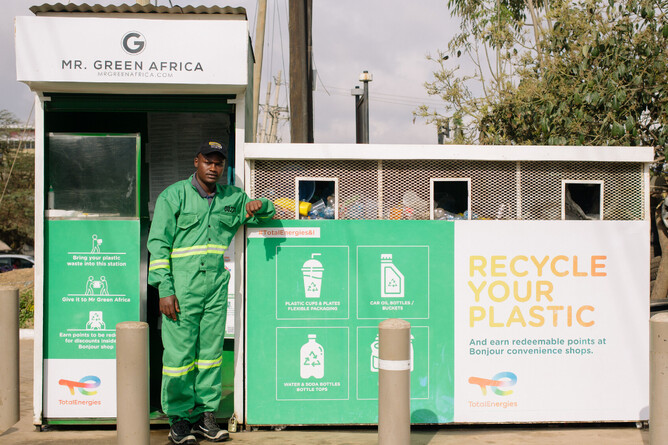In commemoration of Plastic Free July, we are highlighting Pillar Four of our Water+ thesis: Plastic and Solid Waste Circularity. Our Water+ thesis holistically includes all aspects of water under threat and supports solutions that go beyond traditional WASH investments, addressing the impact of solid pollutants such as plastics on our water systems.
The prevalence of plastic waste contaminating our environment has gained significant attention in recent years, however the issue of solid contaminants in our water systems is not a new one; microplastics were recorded as present in our oceans as early as 1972 (Carpenter and Smith 1972). Unfortunately, the issue has worsened with microplastics being found in almost every type of body of water.
Although plastics initially offered material benefits, they have ultimately become the cause of major environmental problems.Their durability and long material lifespan, while helpful across a number of contexts, have resulted in plastics being found everywhere, from our food chain to our soil, but most significantly, in our water systems. The role that water plays in our environment as a natural ecosystem connector has further transported plastics and microplastics through our environment, across biodiversity networks and food chains, having recently been discovered in the human food chain.
Microplastics have detrimental health impacts on living organisms and are proven to cause genetic damage. Their composition enables them to cause immunotoxic, neurotoxic and genotoxic damage in mussels (You Li et al. 2021). In humans, microplastics can also have the capacity to cause endocrine (hormonal) damage through stimulating the release of endocrine disruptors, alongside potentially carrying heavy metals (Lee et al. 2023).
The challenges created by plastic pollution will persist, deteriorating our natural world and causing significant harm to both people and the planet. Undoing this damage is a monumental task; however, preventing and eliminating ongoing pollution is a pressing goal.
How do we prevent plastics from entering our water systems? Recycle, repurpose, and reuse. Keeping the plastic we already have in circulation by giving it a new purpose provides a circular economy solution. So why have we not already achieved this goal?
The recycling sector is notoriously underfunded. According to the IFC, the current funding barrier to close the gap on plastic waste entering our environment is estimated to be around $40 billion (Bouton and Douglass 2023). This is matched by the disparity of lower-income countries bearing a higher plastic lifetime cost, which is up to ten times greater than wealthier countries, showcasing the present inequalities in the plastic value chain.
Many countries have agreements to export their waste to other countries in exchange for investment in the importer's recycling sector. After the recycling sector moved away from exporting waste to China in 2018, exports to Africa quadrupled in 2019 (Whitehouse 2020). The recycling infrastructure of the countries receiving the plastic waste exports could not handle their own waste problem, let alone the additional imported waste.
Funding should be directed through SMEs that aim to solve our plastic problem through decentralised recycling programs capable of providing synergetic effects across different sectors, addressing various global issues. Mr. Green Africa (MGA) is a prime example of how an SME can leverage Kenya’s recycling sector, substantially decreasing the amount of plastic entering our environment while providing employment opportunities for local people. The plastic waste collected is processed back into useful material, which is then sold to third parties such as Unilever for a profit, generating positive economic development and growth.
To find out more about Mr. Green Africa, head over to Our Programmes.
Bibliography
Bouton, S., J. Douglass (2023) Financing the end of plastic pollution, Trellis. Available at: https://www.greenbiz.com/article/financing-end-plastic-pollution#:~:text=The%20IFC%20estimates%20that%20there,—%20village%2Dby%2Dvillage.
Lee, Y. et al. (2023) ‘Health effects of microplastic exposures: Current issues and perspectives in South Korea’, Yonsei Medical Journal, 64(5), p. 301. doi:10.3349/ymj.2023.0048.
Li, Y. et al. (2021) ‘Research on the influence of microplastics on Marine Life’, IOP Conference Series: Earth and Environmental Science, 631(1), p. 012006. doi:10.1088/1755-1315/631/1/012006.
Carpenter, E.J. and Smith, K.L. (1972) ‘Plastics on the Sargasso Sea Surface’, Science, 175(4027), pp. 1240–1241. doi:10.1126/science.175.4027.1240.
Whitehouse, D. (2020) Kenya is not a dumping ground for US plastic, The Africa Report. Available at: https://www.theafricareport.com/51072/kenya-is-not-a-dumping-ground-for-us-plastic/.


